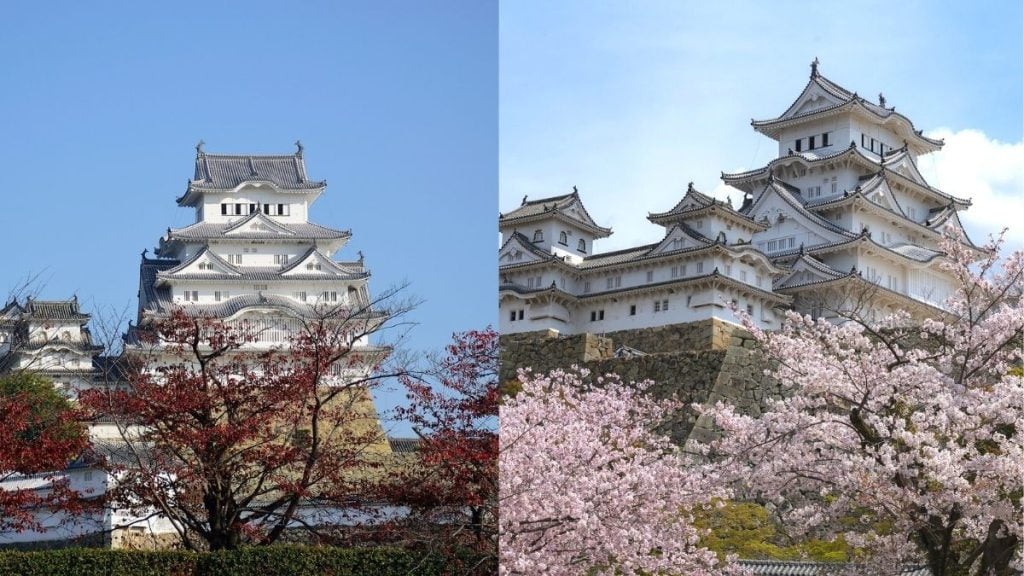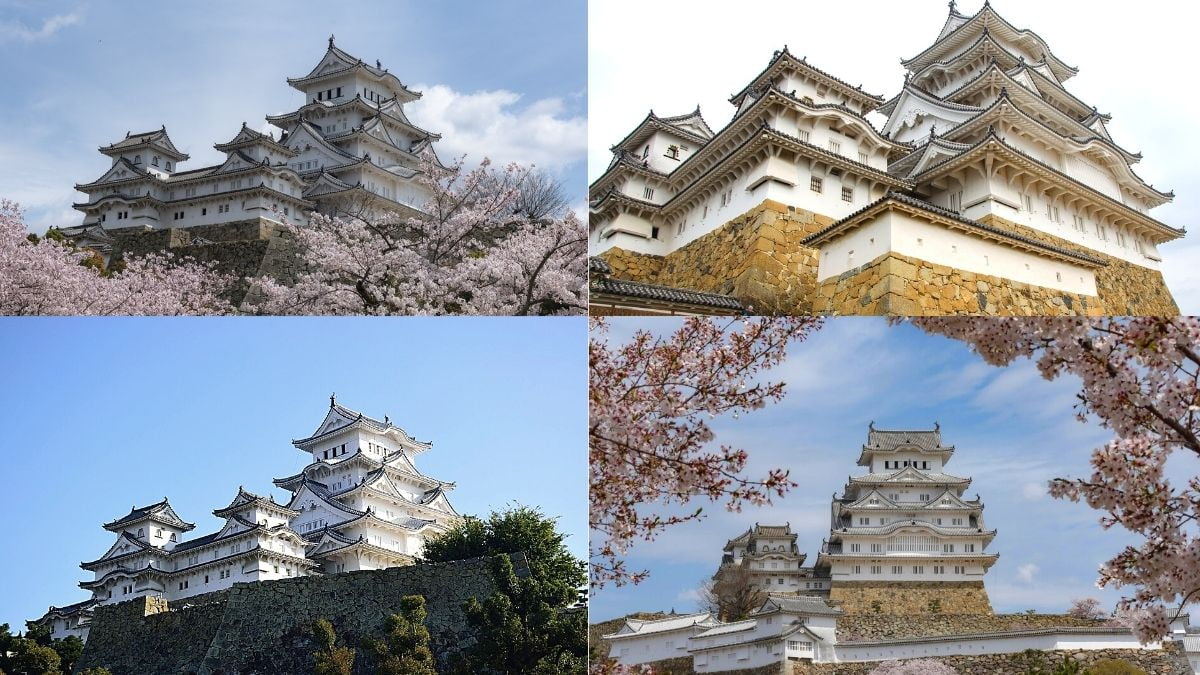Himeji Castle is a Japanese castle complex located on a hill in the Japanese city of Himeji, Hyogo Prefecture. The castle is viewed as the best remaining example of prototypical Japanese castle architecture. Himeji Castle is also known as the White Heron Castle because of its elegant white appearance. The structure is made up of a maze-like agreement in place of fortified buildings, walls, and gates, with a six-story tower hold in the centre point. The entire building is fortified with defensive walls and a double moat. The castle is both an official National Treasure of Japan and a UNESCO World Heritage Site, and it is the biggest and best preserved samurai fortification inside the country.
Do you know the history about Himeji Castle?
Himeji Castle has been initially constructed in 1346 as a fortress against local shoguns by Akamatsu Sadanori. Once Ruler Nobunaga Oda took control of both the Harima district and the castle in 1577, he put Hideyoshi in charge, which changed the heavily secured structure into a palace with over 30 turrets.
As a reward for his support of Ieyasu Tokugawa in the Sekigahara battle against the Toyotomi Daimyo in 1601, Ikeda Terumasa has been given control of Himeji Castle. He planned to design the palace after Emperor’s own castle in Azuchi. He embarked on a nine-year building construction, at the final moment of that which Himeji Castle decided to take on its current form. Terumasa ruled well over districts of Harima, Bizen, as well as Awaji, which were densely populated with Toyotomi clan sympathizers. Thereby, Himeji Castle has been critical in allowing Terumasa to assert his rule over the municipalities.

According to some historians, over 25,000,000 man days spent on the castle’s building projects that included a five-story tenshu as well as a middle and outer moat. Substances from Hideyoshi’s old fort have been used to construct the castle, which has been ironically was using to avoid Hideyoshi’s son from interacting with the lords in the west. Following Terumasa, several family members seized command of the palace, including the Honda, Okudaira, Matsudaira, Sakakibara, and Sakai.
Himeji Castle has never been used in a war, so it has managed to remain in its current form since over three hundred years. This was assigned a national treasure in 1931. Following a series of failed efforts, restoration work started in 1956 but was completed in 1964. It was added to the list of UNESCO World Cultural and Heritage Sites in 1993.
Himeji Castle inside Design and Defensive Features
Although there were originally three, the castle is now surrounded by two water-filled moats. Potential attackers would have to negotiate the surrounding fortification walls after passing through this first line of defense. The walls stretch for 4.8 kilometers, with some sections reaching a height of 26 meters. Because of the massive amount of stone necessary to construct the walls, which can still be viewed today, despair measures have been taken but everything from tombstones to behemoths have been used in some sections.
Despite the eclectic components, the buildings lack mortar to start making them more earthquake resistant. Aside from their great height, the walls and buildings have over 1,000 loopholes through which the defenders could fire arrows and firearms anywhere at attackers.
A final defending feature has been the application of a fire-resistant white plaster to the walls. There were 84 gates outside and inside the palace at one time, but still only 21 persist today. The gates are the weakest link in any castle, but at Himeji Castle, they do not directly lead into the palace substances. Instead, the main gate lead one from a sequence of zigzag paths to another gate or walls with a fortified top out of which defense can fire down on attackers.

This maze of defensive features has been intended not only to confuse the foes, but also to give pockets of easily defensible roles out of which big attacks could be launched to take back the location of the palace that the attackers already had infiltrated. A strong wooden door and crossbeam were used to close the main gate and the smaller gates. Iron plating is used on many of these doors to make them more resilient to fight. As a result, even getting through a gate would be a difficult task, and assuming the attacking force was not lost or completely removed by defensive fire, it would take considerable time and effort to achieve the keep, in which they would find the lord and the castle’s main garrison.
Himeji Castle Interior
The interior of the palace is made up of 83 building structures that encircle the six-story castle keep. If an attacking force chose to bypass the gates and instead attack through the buildings, they would face additional challenges. This is due to the castle complex’s numerous interconnected courtyards and purposefully perplexing layout. Also there are numerous long narrow corridors that would slow a trying to infiltrate force, and most of them have holes in the ceilings throughout which missile systems or simmering fluids might be rained down on the enemy.
There are also secret guardrooms out of which defense can attack the castle’s attackers. Even entering a construction would be hard due to the massive stone foundations. These inwardly sloping walls serve a structural purpose as retaining walls while also posing a formidable climbing challenge to attackers.
How to go Himeji Castle?
Himeji is a city in western Honshu, Japan, located in the southwestern Hyogo ken. It is located west of Kobe, close to the Inland Sea. Himeji Palace is located approximately one kilometer down the broad Otemae-dori Street from Himeji Station. The castle is a 15-20 minute walk from the station’s north exit, or a five-minute bus ride or taxi. Now you know how to go Himeji Castle.


I aside your castle. It is very good.